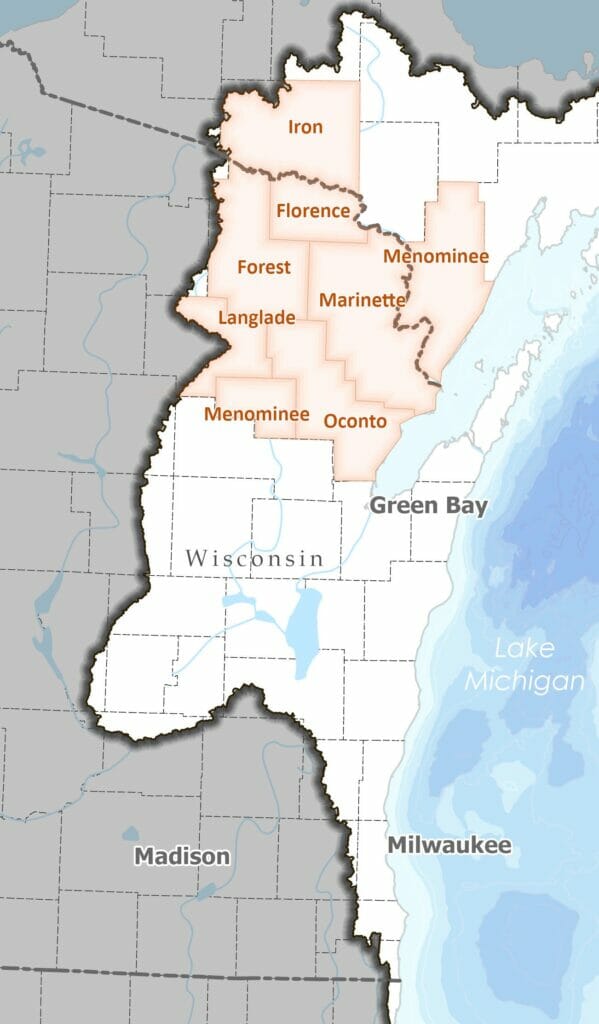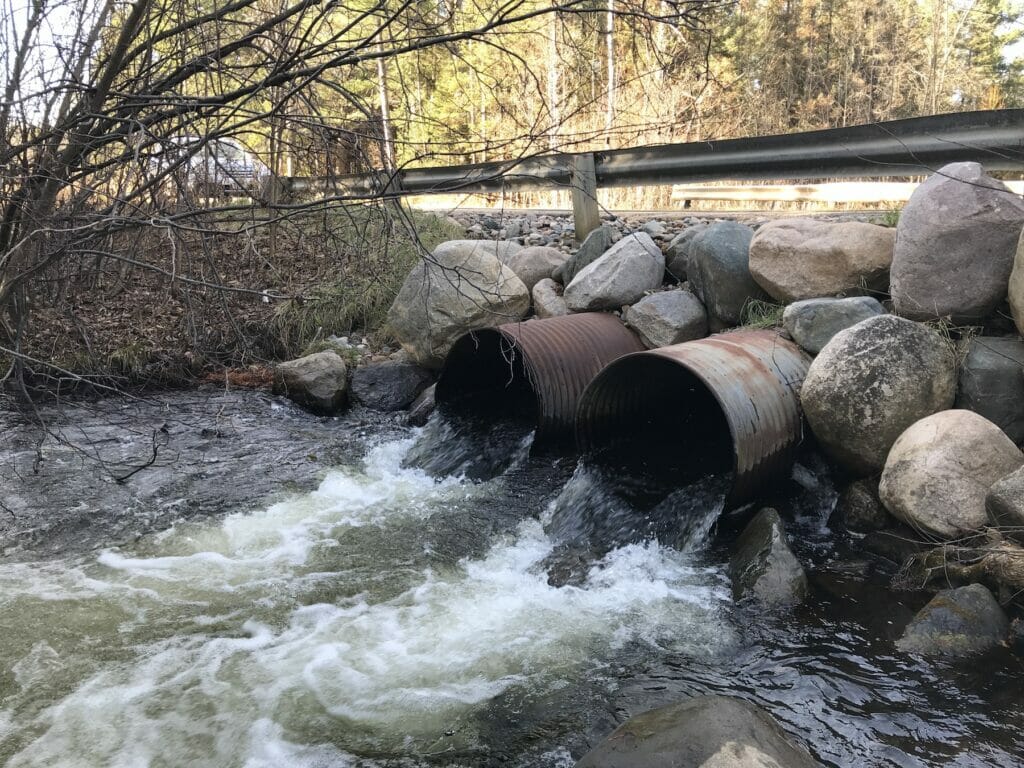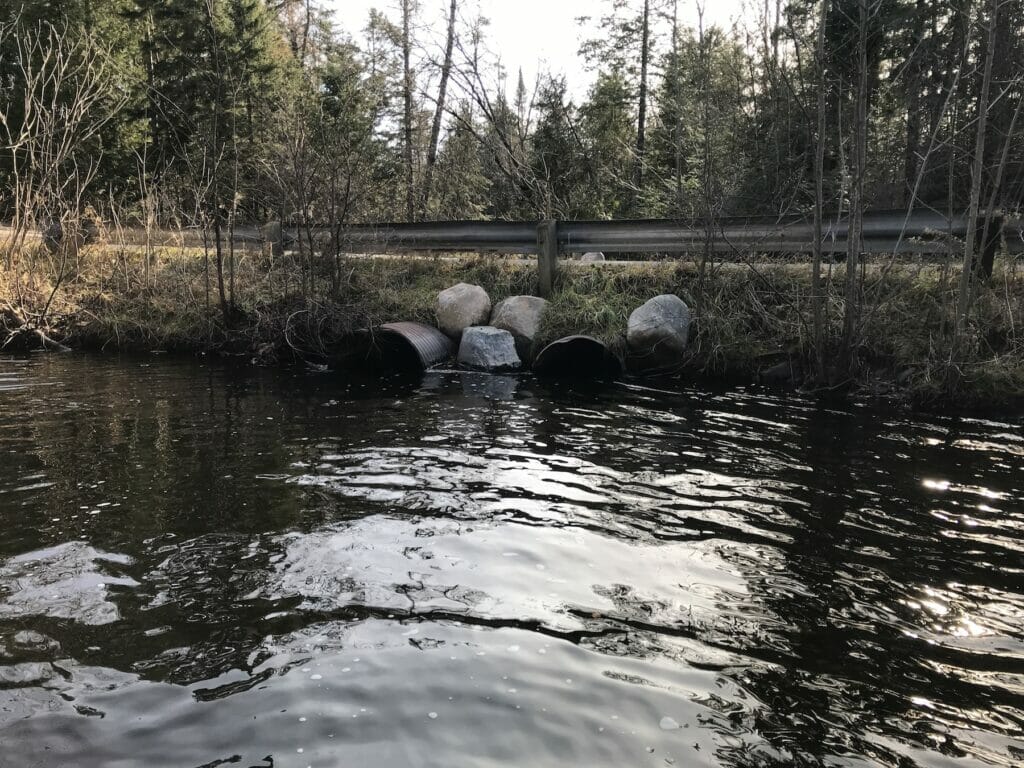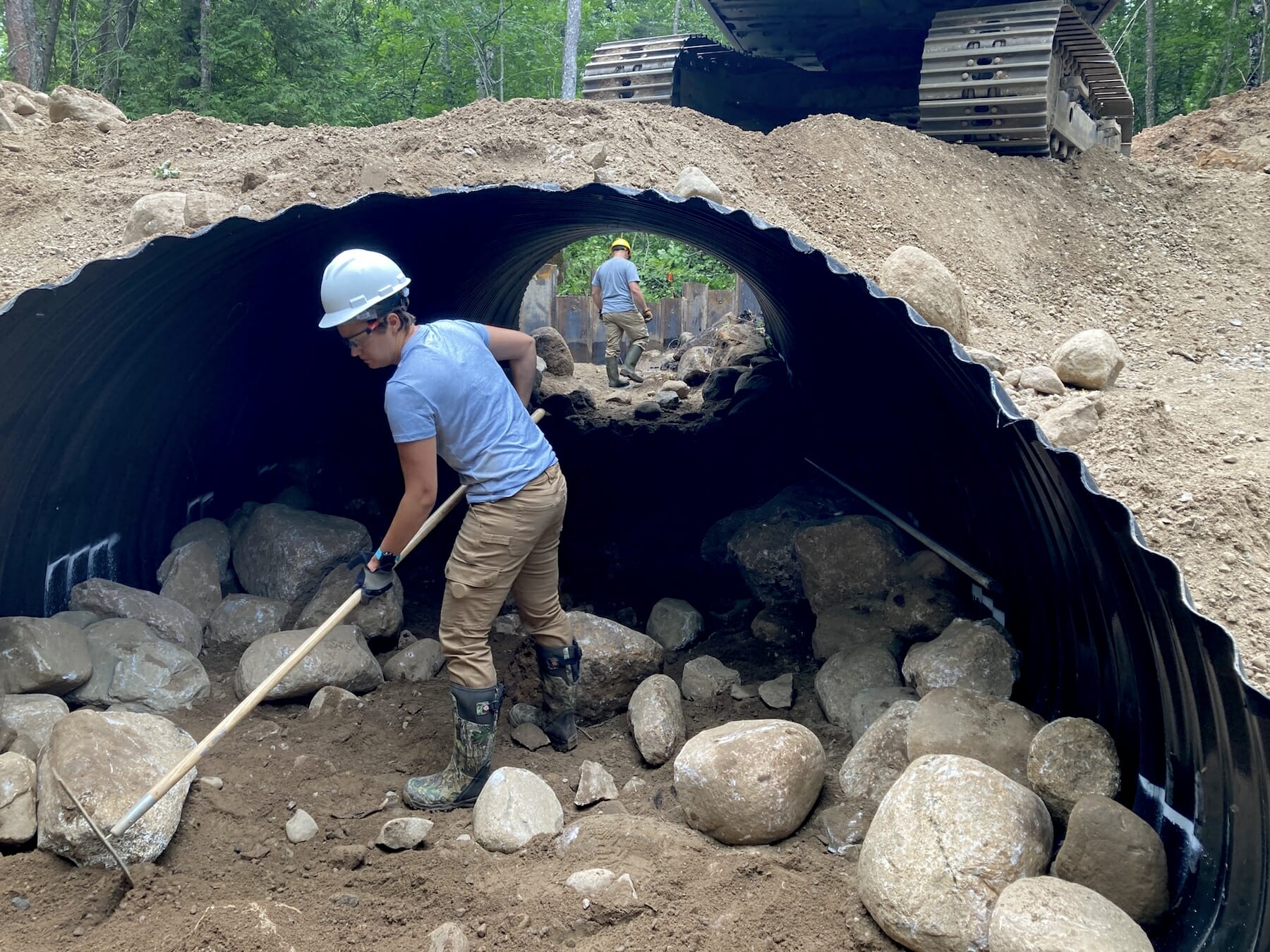Where roads intersect with chilly, clean trout water, you’ll find TU’s Chris Collier at work
As a kid growing up in Ohio, Chris Collier looked forward to vacations of fishing, camping and boating in the wilds of Northern Michigan. These days, he’s creating new memories as a relatively recent transplant to the region.
“Northern Wisconsin is not the UP of Michigan,” said Collier, who lives in Green Bay. “But it still feels almost like a second home.”
Collier is Trout Unlimited’s Great Lakes Stream Restoration manager for Northern Wisconsin. Since starting with the TU staff in January of 2019, he’s spent a lot of time learning his new ground. And a lot of time using innovative approaches to funding needed trout habitat work, including tapping into FEMA’s expanding Building Resilient Infrastructure and Communities (BRIC) program.

The position is a nice fit for Collier, who majored in environmental science in college and worked for a land trust doing wetlands restoration prior to starting with TU.
“I was using my science background to inform conservation decisions, working with landowners and working with community leaders,” he said of his previous job. “It’s really evolved to another level with TU.”
Thousands of miles of chilly, clean streams brimming with trout meander through the Northern Wisconsin landscape, some flowing toward Lake Superior but many winding their way toward Lake Michigan as part of the massive Green Bay watershed. Much of the land is public, either part of the Chequamegon-Nicolet National Forest, or state and county forests.
Explore the area with Trout Unlimited’s new Great Lakes Brook Trout Conservation Portfolio and you’ll see that many of the streams show a high level of resilience to warming temperatures that will put trout populations at dire risk in many other parts of the United States. That makes them a priority for protection.

During his excursions Collier often ends his workdays by spending some time casting flies for colorful native brook trout and feisty wild browns.
“I’m pretty good at finding the small trout,” he laughs.
As good as these streams are, that doesn’t mean they aren’t at risk. And the same goes for the adjoining infrastructure such as the region’s roads.
“The resources are pristine in many ways,” Collier says. “But even though the area is undeveloped and the population is so dispersed, it features a vast network of roads.”
When those roads run adjacent to and cross streams, problems can arise. There are some cases where runoff from roads can dump loads of sediments in streams. A more common problem exists where the road network crosses streams.
In many cases, those crossings aren’t bridges but rather culverts. The downstream sides of those culverts can become perched, creating small waterfalls that impede fish passage upstream.
Also problematic is that many of the culverts are not large enough to handle high flows, which are becoming more frequent as climate change leads to more frequent and significant precipitation events. The resulting flooding from overwhelmed culverts can cause extensive damage to roads.

TU teams, often with the support of volunteers, have spent countless hours surveying crossings throughout the region. Collier and partners review the information to prioritize crossings at highest risk, typically replacing a couple of undersized culverts annually with bridges or larger culverts designed to withstand more significant flows.
“Not only are we restoring connectivity, but we’re helping towns and counties throughout the area that just aren’t equipped to deal with the flooding they’ve been seeing,” Collier said.
Paying for the new crossings can require innovative thinking. Sometimes it can be as simple as partnering with a group such as the Forest Service. Trout Unlimited and partners can also sometimes tap into a locality’s road maintenance budget.
Recently, Collier was able to get a priority project on the books by helping a county access funding through FEMA’s BRIC program, which provides funds to help underserved communities, including states, local communities, tribe and territories, combat threats from climate change and disaster hazards.

In 2021, FEMA doubled its commitment to BRIC to $1 billion, the increased investment rooted in the fact that it’s less expensive to address infrastructure vulnerabilities preemptively rather than to wait until after disaster strikes.
At a road crossing on the Lily River in Forest County, water frequently over-tops the road.
“It’s two 4 ½-foot pipes for a stream that’s 45 to 50 feet wide, so it’s extremely undersized,” Collier said. “Water backs up behind it almost like a dam.”
During heavy precipitation events, and during spring snow melts, the river often over-tops and damages the road.
“Country crews are out there working on it at least once a year,” Collier said. “It’s a ticking time bomb. It’s not a matter of if the crossing will eventually fail, but when.”
Unfortunately for the county, replacing the undersized culverts with a properly sized bridge would cost more than the county’s entire annual road maintenance budget. Tapping into BRIC funding will allow TU to do the $250,000 to $300,000 project within the next year.
“The fundraising can be the most difficult part and that can scare community leaders off because of the expense of these projects,” Collier said. “We’re hoping that by showing some of these methods, combining infrastructure funding and environmental funding, and leveraging other resources, we can make the money go a lot further.”

The upfront costs, while they can be substantial, represent a smart investment.
“When FEMA ran their cost-benefit analysis on the Lilly River crossing, they found that upgrading the crossing to a fish-friendly and flood-resilient design was a more efficient use of funding than continuing to maintain and repair the existing crossing or trying to install a new structure that was the same size as the existing pipes,” Collier said.
The list of partners in these efforts can be long, including the Forest Service, the Fish and Wildlife Service, tribes, natural resource agencies, foundations, state departments of transportation, and counties and towns.
Collier said that he expects momentum to continue as more localities realize that these infrastructure investments are not only good for fish, but also make good financial sense in the long run.
“We are breaking the mold of having to address only the worst offenders,” he said. “We want to be able to work throughout entire watersheds, which is when we can make the most difference.”
For more information on TU’s efforts in Northern Wisconsin, including opportunities to volunteer to help with surveys, please contact Chris Collier at chris.collier@tu.org.



